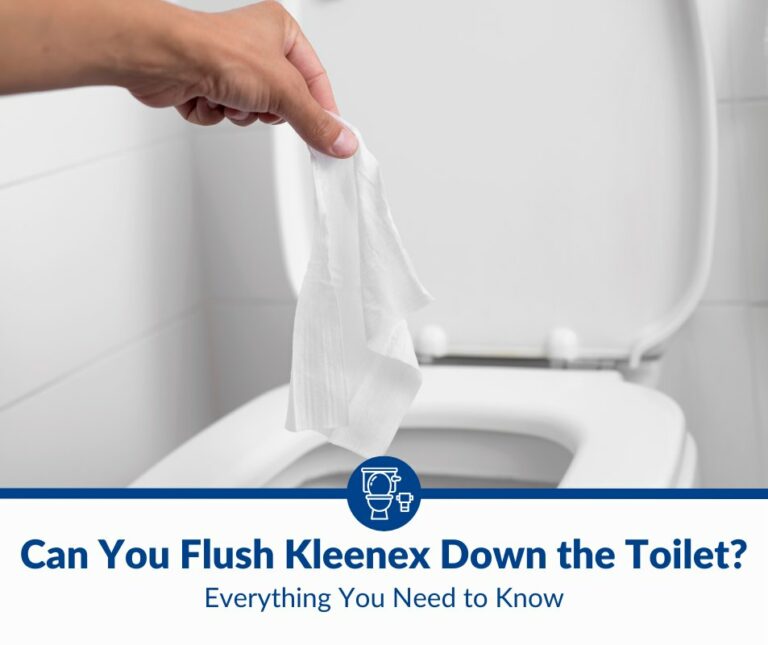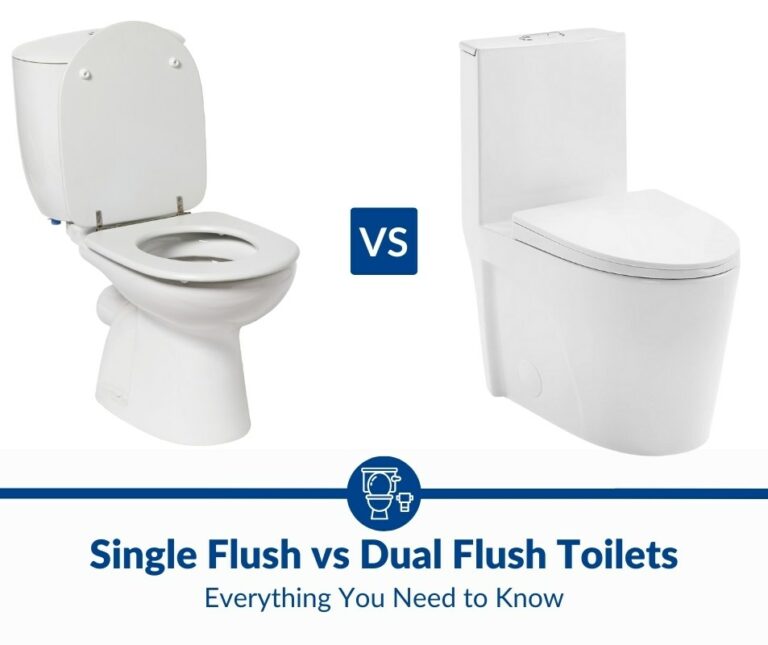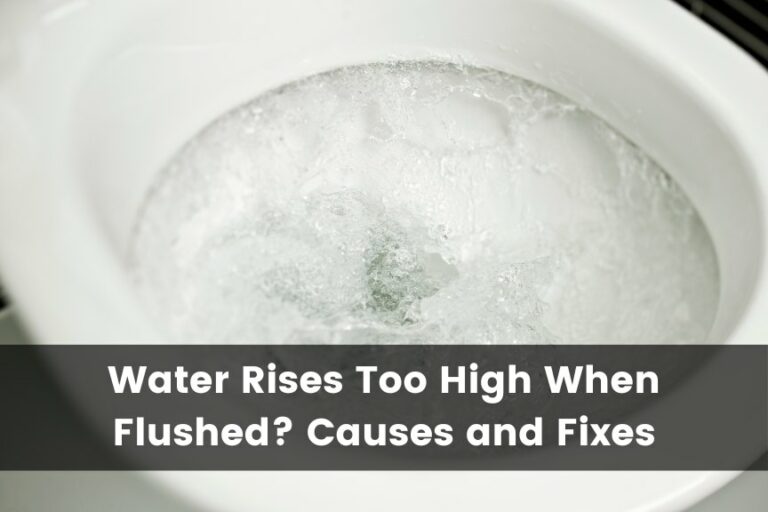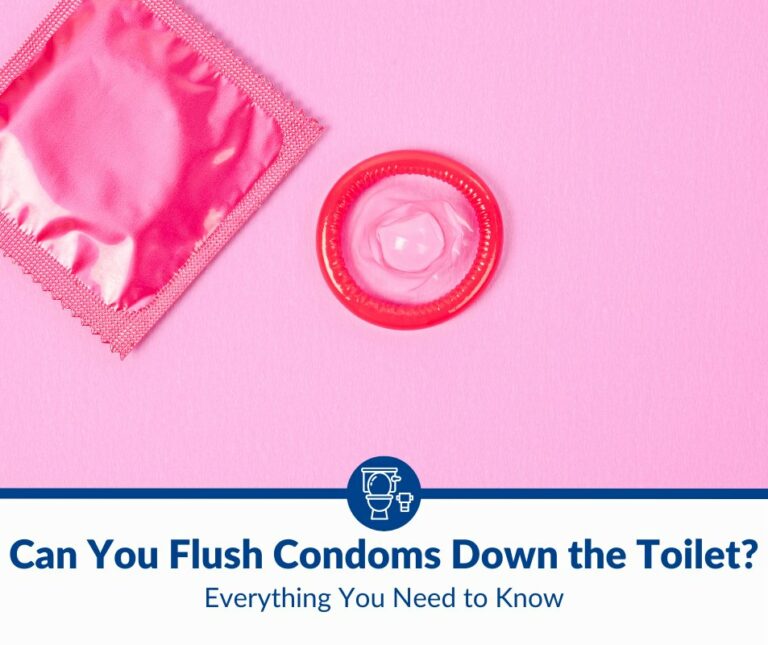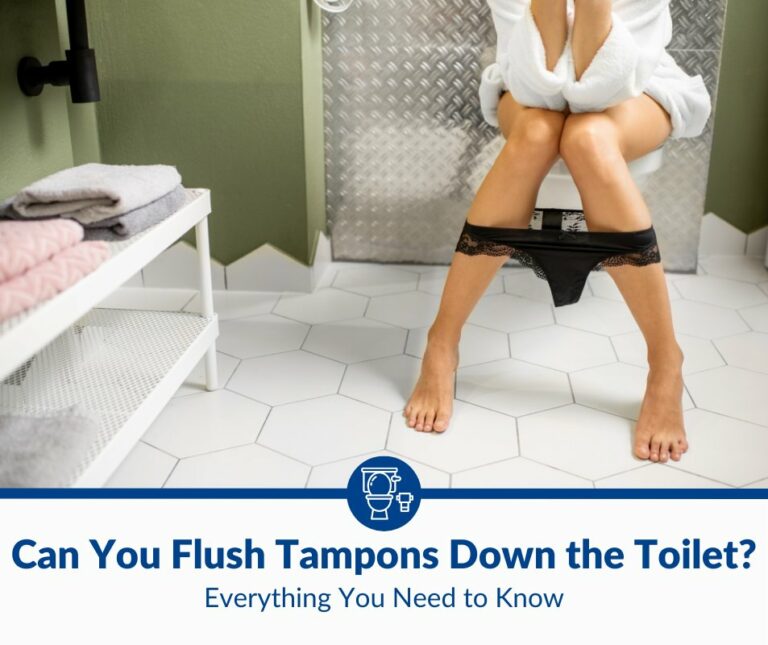Can You Flush Food Down the Toilet?
You know you shouldn’t flush tampons down the toilet, nor should you flush paper towels, baby wipes, or any other non-biodegradable items down the toilet. But food is biodegradable, is it not? Can you flush the random piece of food down the toilet?
You cannot flush food down the toilet, as the sewer pipe is too narrow to handle anything other than human excretion and toilet paper. Food isn’t the same as human waste, as it hasn’t been digested yet, and it can clog the pipes, causing raw sewage to come into your home through the pipes.
If you have leftovers that stink and don’t want to put them in the kitchen trash, there are other ways to dispose of them. This article discusses what happens when you flush food, why it’s a bad idea, how to clear a clogged toilet, and will give you alternatives to disposing of unwanted leftovers. So stick around!
What Happens When You Flush Food?
When you flush food, especially harder bits like bones, it can get caught in the sewer pipes, causing a blockage. And if you keep doing this, it can cause your sewer to back up into the rest of your house through the pipes. The same happens when you flush paper towels down the toilet.
That means that you could have raw sewage come through your sinks and bathtub.
Breaking it down further, even soft foods like bread or oatmeal can get stuck in your pipes. While these have the consistency of human excrement, they can absorb water and swell. They don’t break apart like human waste.
Fats are particularly nasty when you flush them down the toilet. Hot oil from the stove cools off quickly when it mixes with cold water, causing it to congeal and form around the sewer pipes. Do this enough, and your pipes could have a solid fat mass where nothing gets by.
Avoid flushing food down your toilet if you can. However, if some food accidentally gets flushed because your toddler decided that cheerios looked funny floating in the water, does that mean your sewer will immediately get clogged?
What Happens When You Have a Habit Of Flushing Food Down the Toilet?
The random piece of soft food that gets flushed down the toilet shouldn’t be too much of an issue, especially if you don’t make a habit of it. However, the problem comes when you routinely flush your leftovers down the toilet.
When flushed down the toilet daily, food, especially those items that absorb water, can create a complete clog. Starches, like potatoes and oatmeal, don’t break apart like human excrement and can form a gel-like ball in your septic system.
If you do this enough, no amount of plunging, snaking, or other methods will fix your problem. This could even affect your neighbors’ septic systems and eventually work their way to the entire community.
If you habitually flush food down your toilet, you might need to call a plumber soon.
Foods That Are Especially Bad To Flush
While you know you shouldn’t flush food down the toilet, are there specific foods you shouldn’t flush at all? Here are some of the worst foods you can flush:
- Bones from any animal
- Rice
- Oatmeal
- Starches, like potatoes or other root vegetables
- Fats/oils
- Fruit and vegetable peelings
These foods take longer to break down than any other food and can potentially sit in your sewer pipes for years. Grains absorb water and create a gelatinous mess, while bones can get lodged sideways, blocking everything else that comes after it.
Fruit and vegetable peels, and apple cores, don’t dissolve quickly, so this just blocks the sewer pipes.
How To Properly Dispose Of Your Leftovers
If you can’t dispose of your leftovers down the toilet, what should you do with them? If you have a garbage disposal, you can use that. However, you should never put rice down your disposal, as that will get trapped in the pipes and absorb more water.
The simplest way to dispose of your leftovers is to throw them in the garbage and take the bag outside before it decomposes and starts stinking.
However, that might not be the most environmentally friendly way to dispose of your leftovers. If you can find a purpose for your leftovers, especially if they’re still good, then do that. But, if they’ve begun to rot, you can start a composting pile or bucket.
Here are some things you can do with your leftovers without clogging your sewer pipes:
- Filter your hot oil and reuse it until it gets too old. Then, you can add small amounts of it to your compost pile if you stir the compost content well.
- Reduce your food waste by using the FIFO policy. This is First In, First Out, and it refers to moving your older food to the front of the cupboard or refrigerator and placing your newer food in the back, allowing you to use the older food first.
- Repurpose produce scraps, such as vegetable peels, to make vegetable stock. Once you’ve cooked out all the nutrients, they can be thrown away or placed in your compost pile.
- Fruit peelings, like citrus fruits and apples, can be dried. You can use them in a potpourri sachet to keep your drawers and linen closets fresh. Or you can use fruit peels in boiling water to keep your home smelling fresh. Once you’ve used them, they can either be thrown away or, again, placed in your compost pile.
- Stale or dry bread can be used as croutons for salads or other dishes. Cut the bread into cubes, drizzle olive oil and your choice of seasonings, and dry in a low temp oven. They can then be stored and used whenever you want.
- Uncooked rice that’s gone stale or rancid can be used for baking weights. When baking pie crusts meant for cold pies, simply place a shallow layer of rice on the bottom and bake. When cool, remove the rice, place it in a resealable bag, and throw it out. You might not want to save the rice for another time, as it could lend a burnt taste to future products.
The above list is just a sample of what you can do with your leftovers. If you don’t have a compost pile or don’t want to start one, you can find a community composting service.
Of course, there’s nothing wrong with throwing away leftovers in your trash can if that’s what you want to do. However, if you don’t want to have the smell until trash day, you can bag up the leftovers, place them in your freezer, then pull them out on trash day and throw them away.
Personally, I just throw them in the trash immediately. When my trash is full, we take it outside to a larger can to wait for trash day.
What To Do When Your Toilet Is Clogged Due To Flushed Food
So your toddler can’t stop flushing food down the toilet, and now your toilet is clogged. What do you do?
You should use your plunger if you’ve already tried flushing your toilet and it doesn’t go down. You’ll want to press slowly and firmly to create good suction. Once you have the suction, press the plunger down a few times and pull it out of the water.
If the water suddenly goes down, then you’ve dislodged the item. Flush the toilet and watch to ensure your toilet is clear. If it doesn’t, repeat the procedure. But this might lodge the clog further down the line, especially if the clog contains grains that absorb water.
You can also use an auger, which looks like a snake with a crank at the top of it. This is meant to go further down the toilet into the pipes to dislodge the clogged item. Don’t turn the crank too fast, however, as you could damage the toilet, and the porcelain could crack.
If neither of these actions works, you might want to use a liquid drain opener. But don’t use any drain opener, as they usually don’t work. You’ll want to use a sulphuric-based product, but you’ll need to follow these instructions explicitly for your safety:
- Put on eye protection such as safety glasses.
- Put on long rubber gloves that go up to your elbow.
- Place newspaper or paper towels around your toilet to protect your floor.
- Follow the bottle’s directions for the amount of opener to use, and measure it in a disposable measuring cup.
- Carefully pour the opener into your toilet and set a timer for 15-20 minutes, which gives it time to work.
- Once the time is up, carefully flush the toilet, protecting your eyes and face. Since this is an acid-based product, it can burn your skin and cause some real damage.
- The toilet should clear, but you might need a second application if it doesn’t, so repeat the above steps.
If your toilet doesn’t clear, no matter what you do, it might be time to call a plumber. Be sure to tell your plumber that you used a sulphuric-based acid, as it could come flying out and cause damage to your plumber.
Caution: If you get acid on your skin, immediately pour baking soda on the area and add a little water to make a paste. Let it sit on your skin for 5-10 minutes or until the mixture stops fizzing. Then, thoroughly wash the affected area with soap and water. Dry the area, then apply a lanolin-based lotion to the area.
If you’re sensitive to lanolin, use a glycerin-based lotion or any other lotion you might have handy.
Conclusion
Food should never be flushed down the toilet, as it can create several problems, the least of which is a clogged toilet. The best way to dispose of your leftovers is by tossing them in the kitchen garbage.
However, if you want to stay environmentally friendly, you can put them in your compost pile or use them for other purposes if they’re fresh enough.


